英国滑冰传奇

Cyril Beastall
Cyril Beastall was born in Chorlton-cum-Hardy in Lancashire on 9th April 1908 to William and Elizabeth Beastall. Both William and Elizabeth’s origins were Derbyshire, which would feature much in Cyril’s later life. William came from a long line of tailors and shortly after Cyril’s birth the family moved south to Eastbourne and eventually Kent.
On the death of Cyril’s father, he and his mother moved back to Derby where he would find casual work during the Depression, digging trenches or delivering accumulators for wireless sets. He later found a steady clerical job with British Celanese, a chemical manufacturer of acetate fibre and it was probably here that he first started to hone his clerical skills that would put him on his journalistic path.
In his youth Beastall was known to be quite sporty. A keen cyclist he favoured the longer distances, 50 miles being his distance of choice. Such was his prowess on a bike that he was invited to compete in the Great North Road Race in one particular year. He was also a keen cricketer which would eventually result in him suffering a broken nose but despite these forays into various sports, it was roller skating that Beastall had a passion for. It is believed that he happened upon roller skating with a bunch of friends but Beastall really took to it and very soon he found himself involved with the local roller hockey team, the Derby Flyers.
Beastall’s first real step into sports journalism started when he wrote reports on football matches. He quickly became disillusioned, however, when he discovered that the more seasoned football journalist spent their time in the bar as opposed to watching the match. He was advised by his peers to “just make it up” but this didn’t sit well with Beastall and he soon left to find other ways of making a living.
By 1935 he was a regular player within the Derby Flyers roller hockey team and somehow found himself involved with The Billboard magazine in the United States. He started writing articles about skating and became known as the regular British contributor in the magazine’s ‘Rinks and Skaters’ section. Initially his articles centred on hockey but over time they expanded to include roller dance and also voicing his personal thoughts around the various authorities both in Britain and America.
In February 1936 his mother, Elizabeth Beastall, passed away. Beastall had for some time thought of producing his own magazine solely dedicated to roller skating. Whether the passing of his mother was the jolt he needed we shall never know, but by May 1936 issue #1 of “The Roller Skating World” was published. Initially he saw it more as a hobby and he continued to write for The Billboard. His own magazine was printed at his home in Friargate, Derby, on a small printing press that he had bought and declared himself as ‘the Editor’. The magazine could be bought for one penny and through his contacts was sold not only to Great Britain but also to America and Australia. This first edition was just eight sides, most of which were advertisements but which contained a detailed report on the 1936 European Championships held in Stuttgart where the British speed men most successful. The British skaters would win five out of seven events in their first ever attendance at a major international championships and the British hockey team would win the European Championships for the ninth successive time. They would also declared World Champions for the first time. Beastall’s ties with the U.S. meant that he would also get the Richardson skate manufacturer on board as a sponsor for his project. He was up and running.
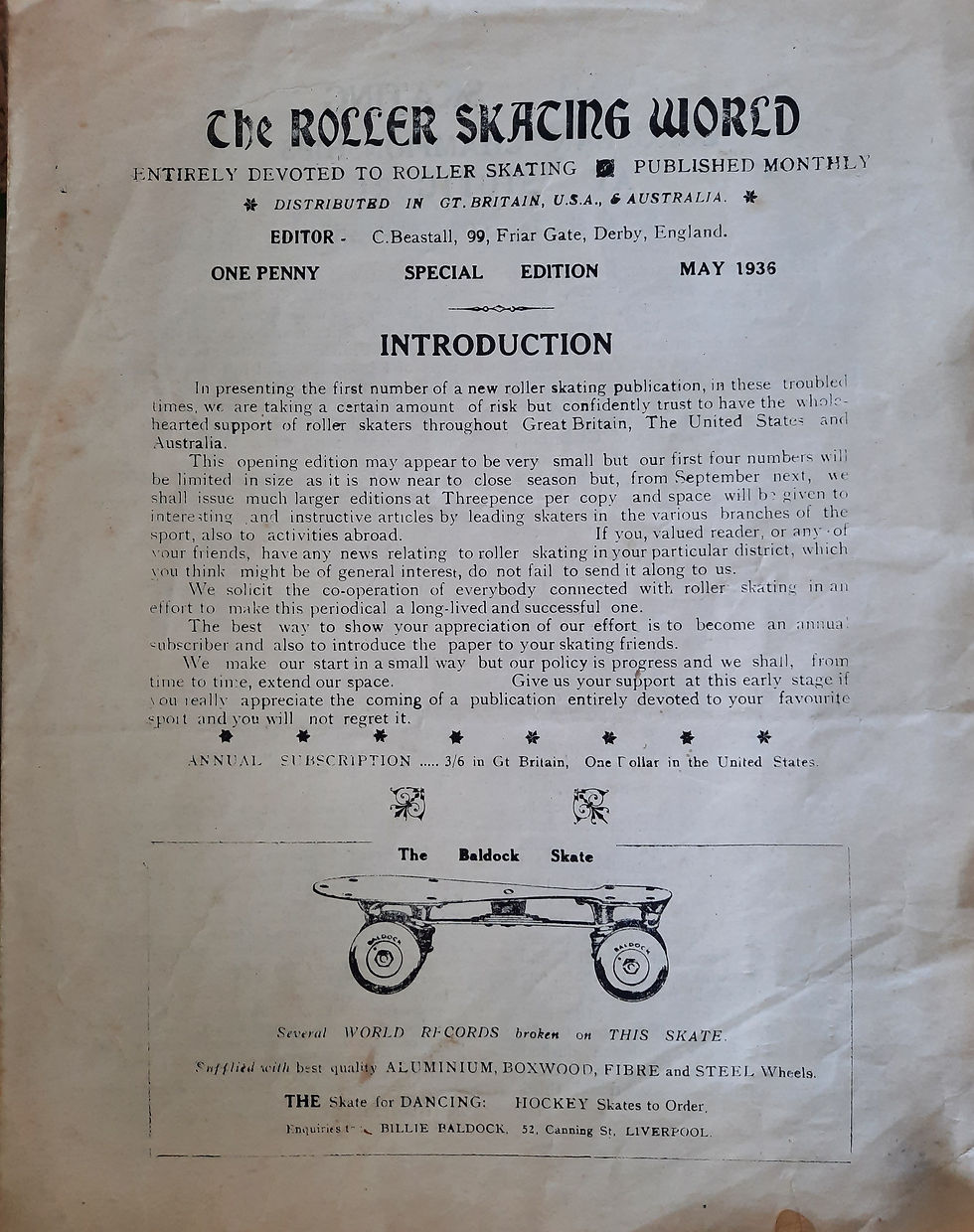
The magazine was immediately popular. A more professional magazine already existed within Britain called “The Skating Times” but this was generally split between ice skating and roller skating, mostly favouring ice. In contrast, Beastall’s initial magazine was solely dedicated to roller skating. By the third edition of “The Roller Skating World” in August 1936 he had added Canada to his list of countries for distribution and boasted that the magazine could now be found in ‘80% of British rinks’. How true that statement was is unclear, but Beastall certainly felt like he was gaining traction.
Beastall continued with his dual role as editor of his own magazine whilst still producing articles for The Billboard, both still in addition to his day job. By 1938 he was turning enough profit from his journalistic ventures to start and use the money to further enhance the magazine’s quality. Until now Beastall had pretty much funded his venture out of his own pocket as costs had been fairly low. It was predominantly a single handed venture with some goodwill from friends and acquaintances in helping him distribute it. Beastall then set up his own business simply called “Roller Skating Publications” and set about making his publication a bit more professional. He was now not only heavily invested in his magazine but was still enjoying his hockey playing, so much so that he was elected to captain the Derby Flyers team for their 1938 tour of Germany.

The last edition of “The Roller Skating World” was published in January 1939 and in June of that year it was replaced by a new magazine simply called “Roller Skating”. Beastall had worked hard to find advertisers and this first issue contained more articles and had less of the ‘printed at home’ feel. Sadly, due to the outbreak of World War II the magazine would last just two editions. A paper shortage put paid to any more publications for a while and all thoughts of roller skating, whether competitively or journalistically, effectively took a hiatus.
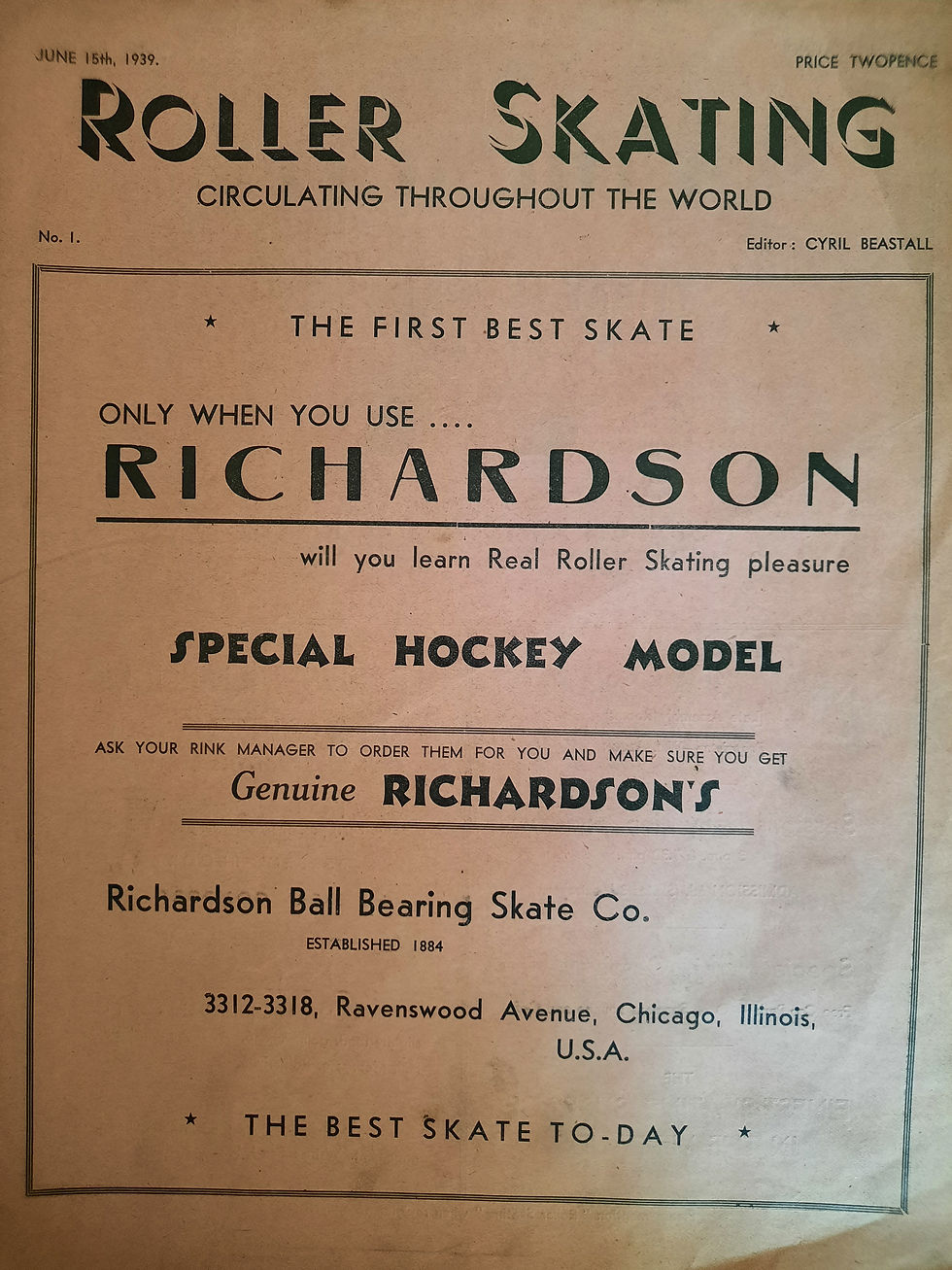
In 1941 Beastall married Ellen White and two years later as war raged around the world they would be blessed with a daughter. During the war Beastall worked at an armaments factory in the Sheepbridge industrial complex in Chesterfield. His job was that of ‘timer’, administering the clock cards for the workers. Now into his 30’s he applied to join the RAF but was rejected. He then turned to the Navy who too turned him down stating that he was in a ‘reserved occupation’. Whilst Beastall did not see military action per-se, whilst walking home he was reportedly shot at by a German Stuka pilot that was attacking the factory in which he worked.
In 1943 paper suddenly became available once more, albeit in small quantities, and Beastall wasted no time in restarting his magazine. After almost five years, in January 1944 Volume 4 issue #1 was published, reverting once more to the title of “The Roller Skating World”. Just a few issues were published before the magazine became a glossy periodical. September 1944 saw Volume 5 issue #1 published and with it a new style cover and an increase in content. For the first time Beastall decided he would include ice skating reports as part of the magazine. The new cover was designed by Beastall’s friend, Stanley Heathcote and Beastall had pushed his advertisers to accept a two fold increase in their rates to improve the written content. Beastall initially envisaged a 16 page monthly periodical but war restrictions placed on the magazine meant that it could only be issued bi-monthly and no more than 20 pages in size. Despite there also being restrictions in the number of roller and ice rinks that were open during the war the magazine was soon getting itself noticed once again.
Being an independent magazine and not connected to any skating organisation, national or international, Beastall was keen to point out that “The Roller Skating World” was free to publish opinions as it saw fit. He recognised that some of these opinions may be controversial in nature but he believed that these independent views as well as the quality of journalism would attract many to buy it and he wasn’t wrong. The magazine was now being distributed in no less than fifteen countries across the globe and demand was outstripping the printing limitations currently placed upon it due to the war.
Recognising that his ice reports and roller reports were getting similar attention Beastall decided to change the name of the magazine to “Skating World” in March 1945. By May 1945 Beastall announced to the world that the magazine could now be reached by telephone by dialling ‘OLD WHITTINGTON 200’.
Shortly after the war had ended the magazine started to turn a small profit, largely thanks to the ice inclusion and the advertising that it brought with it. Beastall commented that “sentimentality had previously caused the magazine to post a loss”, that sentimentality being a sole dedication to his first love and passion, roller skating. However, he recognised that to survive, certainly in these foundation years, ice was a necessary inclusion. As the magazine began to increase further in popularity Beastall was turning enough profit that he could now make his ownership and editorial duties his full time job. Not only that but his involvement with roller hockey still afforded him the opportunity to travel and be involved in his passion. One example of this was his invitation to referee a match in Milan, Italy. A disputed decision resulted in a player whacking him with a hockey stick across his shoulders! Unperturbed, Beastall continued to embrace his dreams which were rapidly becoming a reality for him.
Despite the war having now ended restrictions were still in place with regards to magazine sizes and the regularity of publication. Beastall was faced with a conundrum as to how he might keep the quality of journalism whilst adhering to the war restrictions still in place. His answer was to create a new magazine simply called “Ice Skating” which would be solely dedicated to the disciplines within that sport whilst “Skating World” would focus entirely on roller skating. By having two separate magazines meant that his concerns were abated but of course it also meant increased costs. Beastall again focused heavily on advertising and through his numerous contacts he managed to succeed in keeping both magazines going. In fact, such was his circle of influence now within the sport of roller skating that in April 1946 he was invited to attend the very first post-war meeting of the world governing body, the Federation International de Patinage a Roulettes (FIPR), in Montreux, Switzerland. He would create a report of that event and of course have it published in his magazine.
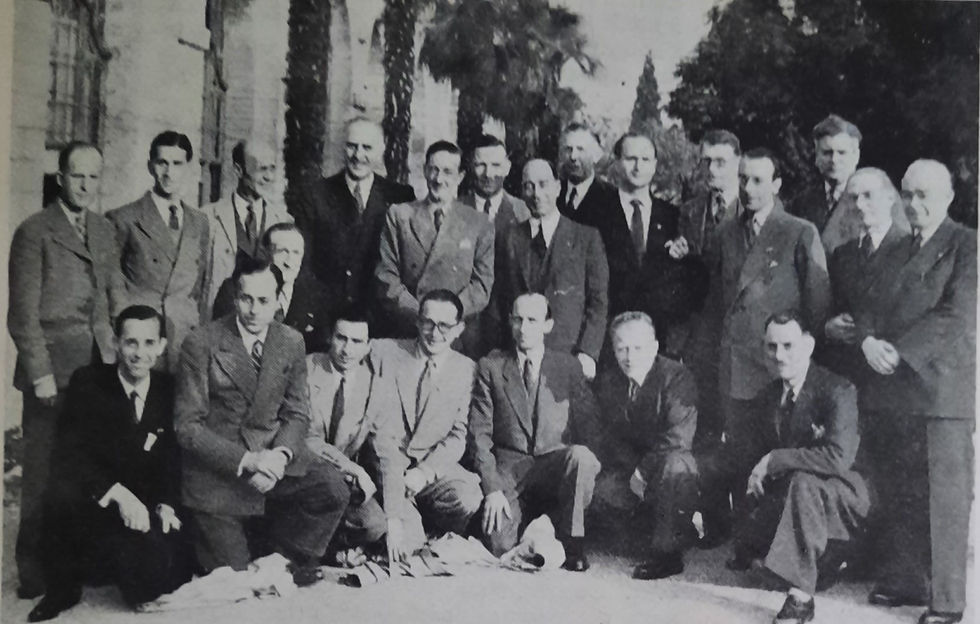
In September 1946 there would be another reshuffle of names. Beastall decided to reintroduce the magazine “Roller Skating” to the world. Last published in August 1939 it picked up where the old one had left off. The magazine “Ice Skating” was dispensed with and “Skating World” now became the dedicated magazine for all things ice skating. Why the change isn’t clear but one might suspect that as roller skating was Beastall’s first love he felt that it deserved a name more befitting its content. This change would see “Roller Skating” become an established magazine up and down the country for the next twenty three years covering all aspects of the sport from hockey, artistic and of course speed. “Skating World” continued to also be published for those who preferred the chillier sport!
By now Beastall was already a well respected and widely known individual in roller skating circles across the globe. He had built a network of contacts and friends that was second to none. Throughout what remained of the 1940’s and well into the 1950’s Beastall would frequently attend roller rinks the length and breadth of the country. With his trademark pipe he would also be present at many of the major international events, often writing reports or calling on others to submit their own reports in order that he may publish them. The likes of Henry Crystall, Leslie Brooks and George Maddock were just some of the many regular contributors. The magazine was booming and skaters would read it avidly from cover to cover each month, either looking for their own name in some of the reports or sending in their own views, no matter how controversial, on matters at hand. It was the go-to place for all information to do with the sport and each issue was eagerly anticipated each month.
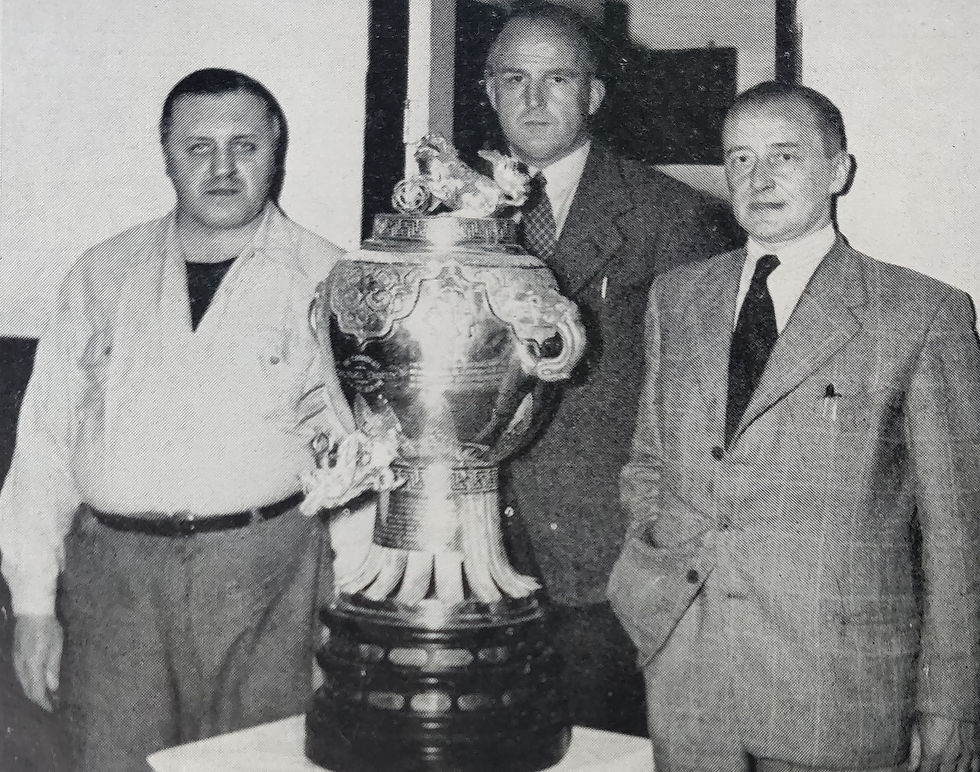
In the summer of 1952 Beastall and his family moved to Margate, Kent. Beastall had spent some of his youth living in Kent and was all too familiar with the pleasant summers that could be enjoyed on the Isle of Thanet. In 1956 the Beastall’s enjoyed the birth of their second child, a son. Roller (speed) skating was enjoying a heyday and Britain was a regular amongst the medals on the world scene. Numbers for some domestic races neared a hundred and clubs were a plenty up and down the length and breadth of the country. Beastall continued to enjoy the fact that his passion was also his profession. He was in a good place and often he would take his family on ‘business’ trips with him around the various roller rinks.
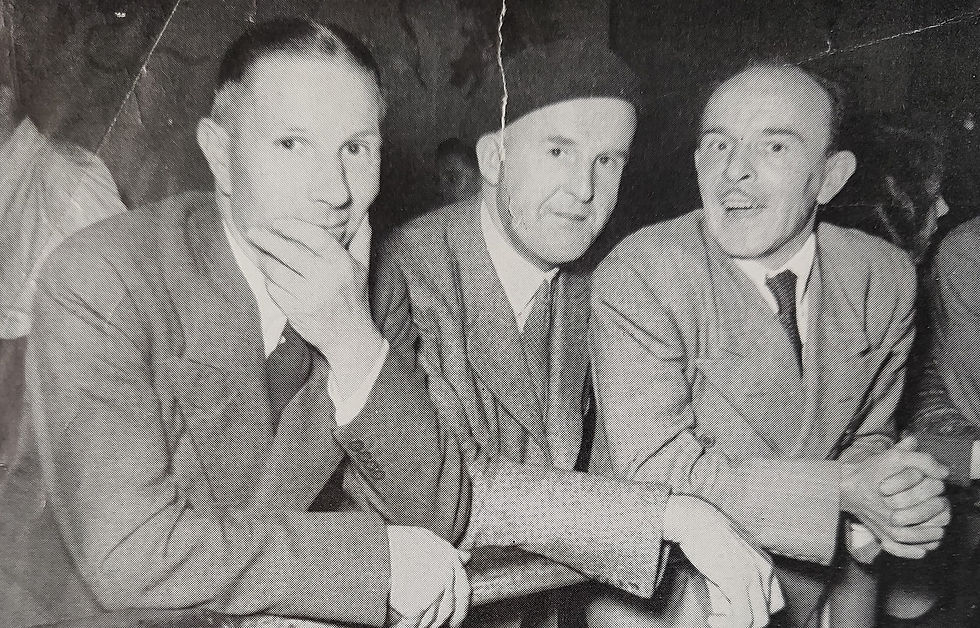
One could say that Beastall was obsessed with quality. In fact, during his early years the printers did their best to persuade him to go ‘photo litho’ to keep costs down, but he resolutely stuck to his guns and continued with the more expensive but better quality monotype. When Beastall lived in Derbyshire he had always used the Nottinghamshire based printers, Arthur Gaunt & Sons, to print his magazines when it shifted from being a ‘home produced’ publication to a full blown glossy international journal. When he moved to Kent, he loyally maintained the relationship with Gaunt’s believing that their quality was as he expected and that they had never let him down.
As the saying goes, ‘all good things must come to an end’. Throughout the 1950’s and much of the ‘60’s “Roller Skating” was the only publication dedicated to the sport, but towards the end of that decade interest in roller skating had started to wane. A number of other magazines dedicated to the sport were starting to be published. One such magazine was simply known as “SPEED”. Like his own publication, this magazine started out as an amateur home printed periodical, and as was typical of Beastall he embraced it rather than rejecting it, remembering what it was like to start out in the world of publication just as he had some 30 years earlier. Unfortunately, “SPEED” was short lived. It did not have the same access to advertising or the same network of support that “Roller Skating” could offer, but that too would soon cease. In July 1969 the last and 247th edition of “Roller Skating” was published.
Beastall had previously commented that without advertising and decent written content the magazine was in serious danger of not existing and in the summer of 1969 with an absence of both, his fears were realised. His ice skating magazine “Skating World” continued to be published and snippets of roller speed race results would occasionally find their way into the magazine on a page or two dedicated to the sport, but the days of having a magazine of twenty plus pages detailing race events, dance competitions, hockey competitions and opinionated letters were well and truly over.
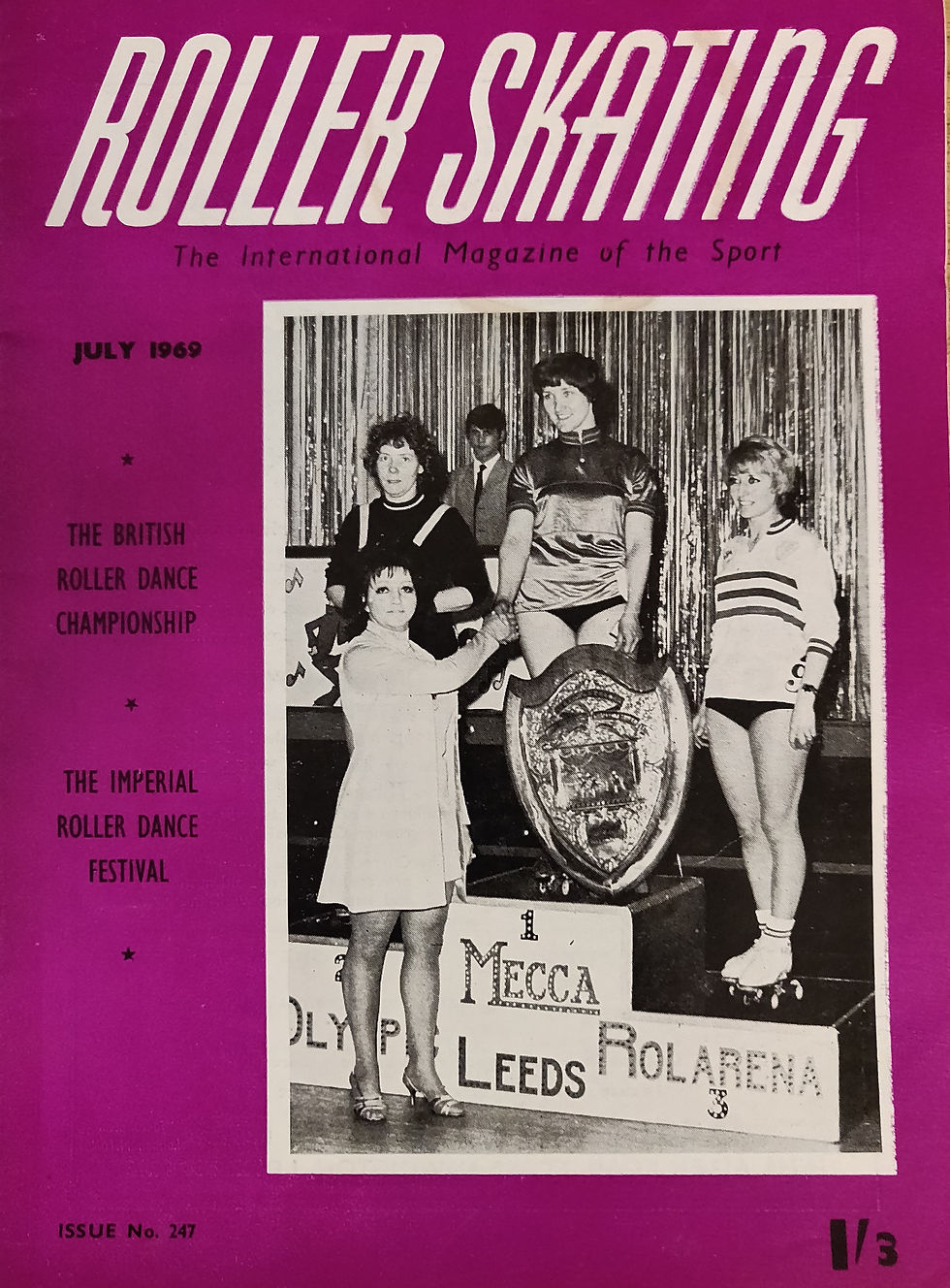
In January 1972 and after 275 issues, “Skating World” also ceased. Whilst ice skating was still a fairly popular sport, funding for the magazine had dried up. Roller rinks across the country also closed their doors and for the first time since the second world war had ended there were to be no British speed skating championships for that year.
It was a sad time for Beastall and a sad time for the sport in general. He had dedicated more than 30 years of his life to producing information for others to enjoy and now he found himself having to play a bit part in a sport that was very much a minority. He still had his network of friends and continued to enjoy passing the time discussing matters with them and at 64 he was looking forwards to his retirement. His son and daughter lacked the experience to carry on the magazine and in all honesty, it may have been folly to have tried knowing how the skating landscape was faring at that time.
On 14th July 1973 Cyril Beastall suffered a heart attack. He was taken to Ramsgate Hospital where just a few short months after his official retirement, he would sadly pass away.
Cyril Beastall was a much principled and opinionated individual with a strong sense of justice and this often came across in his editorial notes. But more often than not it was these characteristics that helped him cement his legacy in the world of roller skating. He was driven to the point of obsession and his thirst for knowledge knew no bounds. His brain held an encyclopaedia of roller skating knowledge and he could be called upon to answer questions ranging from the most basic to the most complex. He studied data and recorded roller skating statistics initially as a hobby and then latterly as a profession. His own personal involvement and love of the sport had seen him witness or be party to many of the successes of British roller speed skating over the years, from our first world champion to our last.
Cyril would have undoubtedly embraced the internet as a source of information. Quite how he would have viewed social media is up for debate, but there would most certainly have been a Facebook page or a website. Without Cyril Beastall there would undoubtedly be no British Skating Legends. Much of the information contained within these pages has been gleaned from Cyril Beastall’s publications but more than that, his innate desire to produce something for others whilst satisfying his own obsession and passion has somehow also been passed on. It is hoped that his legacy lives on through these pages and in fact, as I write this, I can smell the subtle burning of pipe tobacco.


World renowned creator and editor of the popular 'Roller Skating' magazine